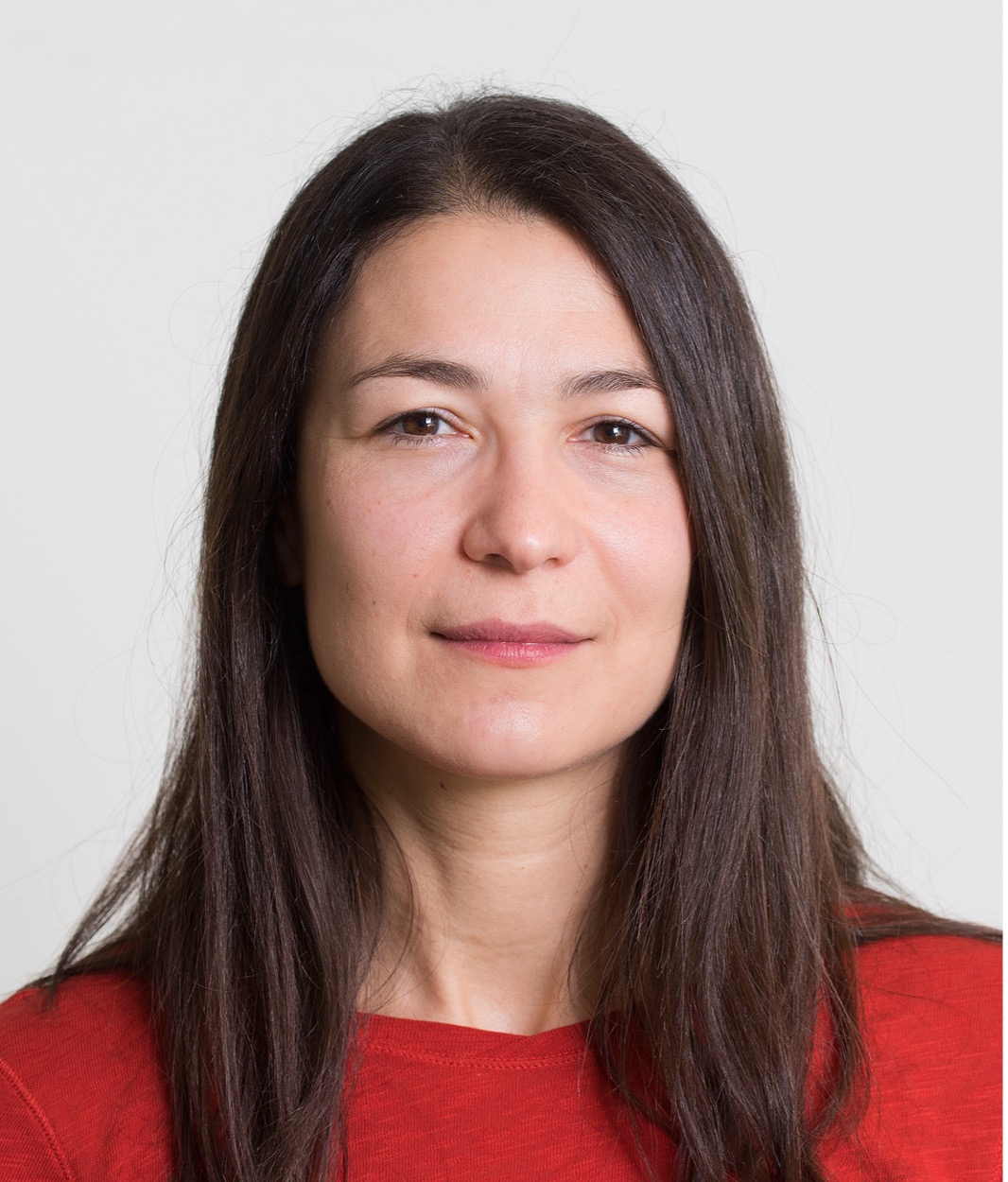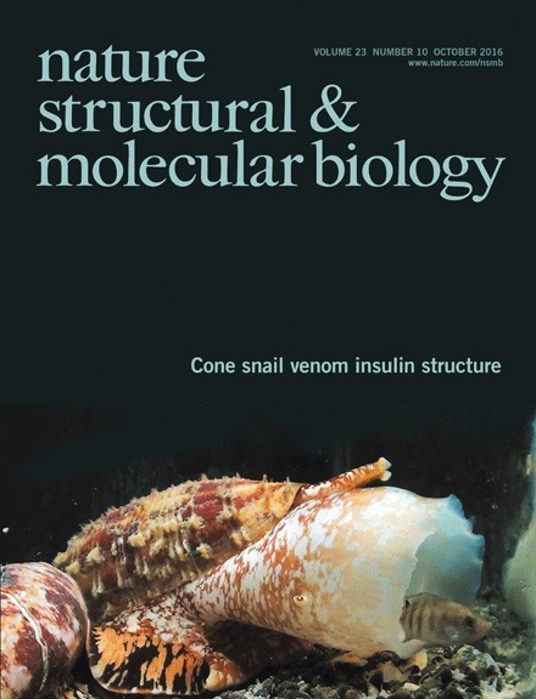Helena Safavi-Hemami
Associate Professor of Biochemistry and Adjunct Associate Professor of Biological Sciences and of Molecular Pharmaceutics
Natural Products, Drug Discovery, Venom, Peptides, Evolution, Computational Peptide Discovery, Neuropeptides, Hormones, Signaling Systems, GPCRs, Membrane Proteins, Ion Channels, Metabolism, Insulin, Diabetes, Pain

Molecular Biology Program
Biological Chemistry Program
Education
M.Sc. University of Cologne
Ph.D. University of Melbourne
Research
Venomous animals have evolved large libraries of bioactive compounds that are all targeted at disrupting the physiology and/or behavior of other organisms. The venoms of marine cone snails have been particularly useful because of the high diversity and specificity of peptides that potently target receptors, ion channels and transporters in prey. These molecular targets play critical roles in health and disease rendering cone snail venoms ideal sources for the discovery of pharmacological tools and therapeutics for a wide range of conditions including pain, epilepsy, stroke and autoimmune disease.
Our research centers on applying novel computational and experimental tools for the
discovery of toxins with therapeutic potential. We are particularly interested in
small peptide toxins that mimic endogenous receptor ligands in prey, including venom
peptides involved in glucose homeostasis (e.g., venom insulins) and pain (e.g., neurotensin-like peptides).

Figure 1: Diversity of predatory marine gastropods sequenced for drug discovery

Figure 2: Cone snails prey on fish, other snails and worms (artwork by Bob Lang)

Figure 3: Journal cover showing how the geography cone (Conus geographus) captures its fish prey
References
- Safavi-Hemami, H.; Brogan, S. E.; Olivera, B. M., Pain therapeutics from cone snail venoms: From Ziconotide to novel non-opioid pathways. J Proteomics 2018.10.1016/j.jprot.2018.05.009
- Robinson, S. D.; Safavi-Hemami, H., Venom peptides as pharmacological tools and therapeutics for diabetes. Neuropharmacology 2017, 127, 79-86.10.1016/j.neuropharm.2017.07.001
- Robinson, S. D.; Li, Q.; Lu, A.; Bandyopadhyay, P. K.; Yandell, M.; Olivera, B. M.; Safavi-Hemami, H., The Venom Repertoire of Conus gloriamaris (Chemnitz, 1777), the Glory of the Sea. Mar Drugs 2017, 15, (5).10.3390/md15050145
- Olivera, B. M.; Raghuraman, S.; Schmidt, E. W.; Safavi-Hemami, H., Linking neuroethology to the chemical biology of natural products: interactions between cone snails and their fish prey, a case study. J Comp Physiol A Neuroethol Sens Neural Behav Physiol 2017, 203, (9), 717-735.10.1007/s00359-017-1183-7
- Li, Q.; Barghi, N.; Lu, A.; Fedosov, A. E.; Bandyopadhyay, P. K.; Lluisma, A. O.; Concepcion, G. P.; Yandell, M.; Olivera, B. M.; Safavi-Hemami, H., Divergence of the Venom Exogene Repertoire in Two Sister Species of Turriconus. Genome Biol Evol 2017, 9, (9), 2211-2225.10.1093/gbe/evx157
- Safavi-Hemami, H.; Lu, A.; Li, Q.; Fedosov, A. E.; Biggs, J.; Showers Corneli, P.; Seger, J.; Yandell, M.; Olivera, B. M., Venom Insulins of Cone Snails Diversify Rapidly and Track Prey Taxa. Mol Biol Evol 2016, 33, (11), 2924-2934.10.1093/molbev/msw174
- Safavi-Hemami, H.; Li, Q.; Jackson, R. L.; Song, A. S.; Boomsma, W.; Bandyopadhyay, P. K.; Gruber, C. W.; Purcell, A. W.; Yandell, M.; Olivera, B. M.; Ellgaard, L., Rapid expansion of the protein disulfide isomerase gene family facilitates the folding of venom peptides. Proc Natl Acad Sci U S A 2016, 113, (12), 3227-32.10.1073/pnas.1525790113
- Robinson, S. D.; Safavi-Hemami, H., Insulin as a weapon. Toxicon 2016, 123, 56-61.10.1016/j.toxicon.2016.10.010
- Menting, J. G.; Gajewiak, J.; MacRaild, C. A.; Chou, D. H.; Disotuar, M. M.; Smith, N. A.; Miller, C.; Erchegyi, J.; Rivier, J. E.; Olivera, B. M.; Forbes, B. E.; Smith, B. J.; Norton, R. S.; Safavi-Hemami, H#.; Lawrence, M. C#., A minimized human insulin-receptor-binding motif revealed in a Conus geographus venom insulin. Nat Struct Mol Biol 2016, 23, (10), 916-920.10.1038/nsmb.3292 # equal contribution
- Safavi-Hemami, H.; Gajewiak, J.; Karanth, S.; Robinson, S. D.; Ueberheide, B.; Douglass, A. D.; Schlegel, A.; Imperial, J. S.; Watkins, M.; Bandyopadhyay, P. K.; Yandell, M.; Li, Q.; Purcell, A. W.; Norton, R. S.; Ellgaard, L.; Olivera, B. M., Specialized insulin is used for chemical warfare by fish-hunting cone snails. Proc Natl Acad Sci U S A 2015, 112, (6), 1743-8.10.1073/pnas.1423857112
- Aman, J. W.; Imperial, J. S.; Ueberheide, B.; Zhang, M. M.; Aguilar, M.; Taylor, D.; Watkins, M.; Yoshikami, D.; Showers-Corneli, P.; Safavi-Hemami, H.; Biggs, J.; Teichert, R. W.; Olivera, B. M., Insights into the origins of fish hunting in venomous cone snails from studies of Conus tessulatus. Proc Natl Acad Sci U S A 2015, 112, (16), 5087-92.10.1073/pnas.1424435112
- Young, N. D.; Nagarajan, N.; Lin, S. J.; Korhonen, P. K.; Jex, A. R.; Hall, R. S.; Safavi-Hemami, H.; Kaewkong, W.; Bertrand, D.; Gao, S.; Seet, Q.; Wongkham, S.; Teh, B. T.; Wongkham, C.; Intapan, P. M.; Maleewong, W.; Yang, X.; Hu, M.; Wang, Z.; Hofmann, A.; Sternberg, P. W.; Tan, P.; Wang, J.; Gasser, R. B., The Opisthorchis viverrini genome provides insights into life in the bile duct. Nat Commun 2014, 5, 4378.10.1038/ncomms5378
